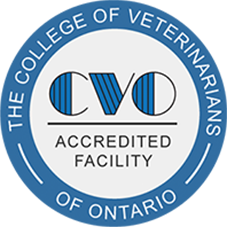Library
-
The Bearded Collie just loves life. He is an active, shaggy dog with an effervescent personality, always ready to join his people in any activity.
-
If they are well looked after, including proper diet and husbandry, bearded dragons are reasonably hardy animals. Common health conditions of pet bearded dragons include CANV, atadenovirus, metabolic bone disease, parasites, infectious stomatitis (mouth rot), and respiratory infections. Any change from normal is cause for concern and should be immediately evaluated by your veterinarian.
-
Bearded dragons have specific environmental requirements to thrive as our pets. This handout outlines their housing needs, including enclosure size, appropriate bedding, preferred accessories, and necessary lighting and temperature control.
-
Bearded dragons are well-known small to medium-sized lizards. They are currently considered one of the most popular pet lizards for all ages. Owners often refer to their pets as 'beardies'. This handout explains how they differ from other pets and provides tips for selecting a healthy beardie to keep as your pet.
-
Bearded dragons are susceptible to several health problems; understanding them will help you prevent them from occurring in your pet and know when to seek veterinary attention. Problems described in this handout include salmonellosis, avascular necrosis, tail rot, abscesses, and dystocia (egg binging).
-
The Beauceron is alert, courageous, and loyal, making him an ideal family guardian. He's also eager to please and extremely intelligent, gifted at any task involving learning, memory, and reasoning.
-
Anyone can see why the Bedlington Terrier is called the "little lamb dog." That gentle manner, that lamb-soft coat, those tasseled ears... adorably affectionate and sweet, the Bedlington is the perfect combination of a loving and devoted family pet and a fiery, brave-hearted terrier that can run like the wind on the hunt or defend himself with lion-like courage if provoked.
-
There is a wide range of non-pharmaceutical products designed to improve a pet's behavior. There is little oversight for many of these products which means that any given product may not work for your pet. Ask your veterinarian before using any over-the-counter product for your pet. The label “natural” does not guarantee a product is safe to use in dogs and cats.
-
Behavioral problems can develop for many reasons. Genetics and the environment both contribute to behavior. When problematic behaviors arise, particularly if they develop suddenly or occur in older pets, it is important to screen for underlying medical conditions. The behavioral history provides valuable information to assist in determining the root cause for any behavioral concern.
-
Many behaviors are normal but problematic for a particular person or household. Some behaviors are not normal and may be unsafe for the pet or for others. The first step is to ask your veterinarian to examine your pet for signs of physical illness. Then, a behavior consultation can be scheduled to assess the behavior and design an appropriate treatment strategy.


